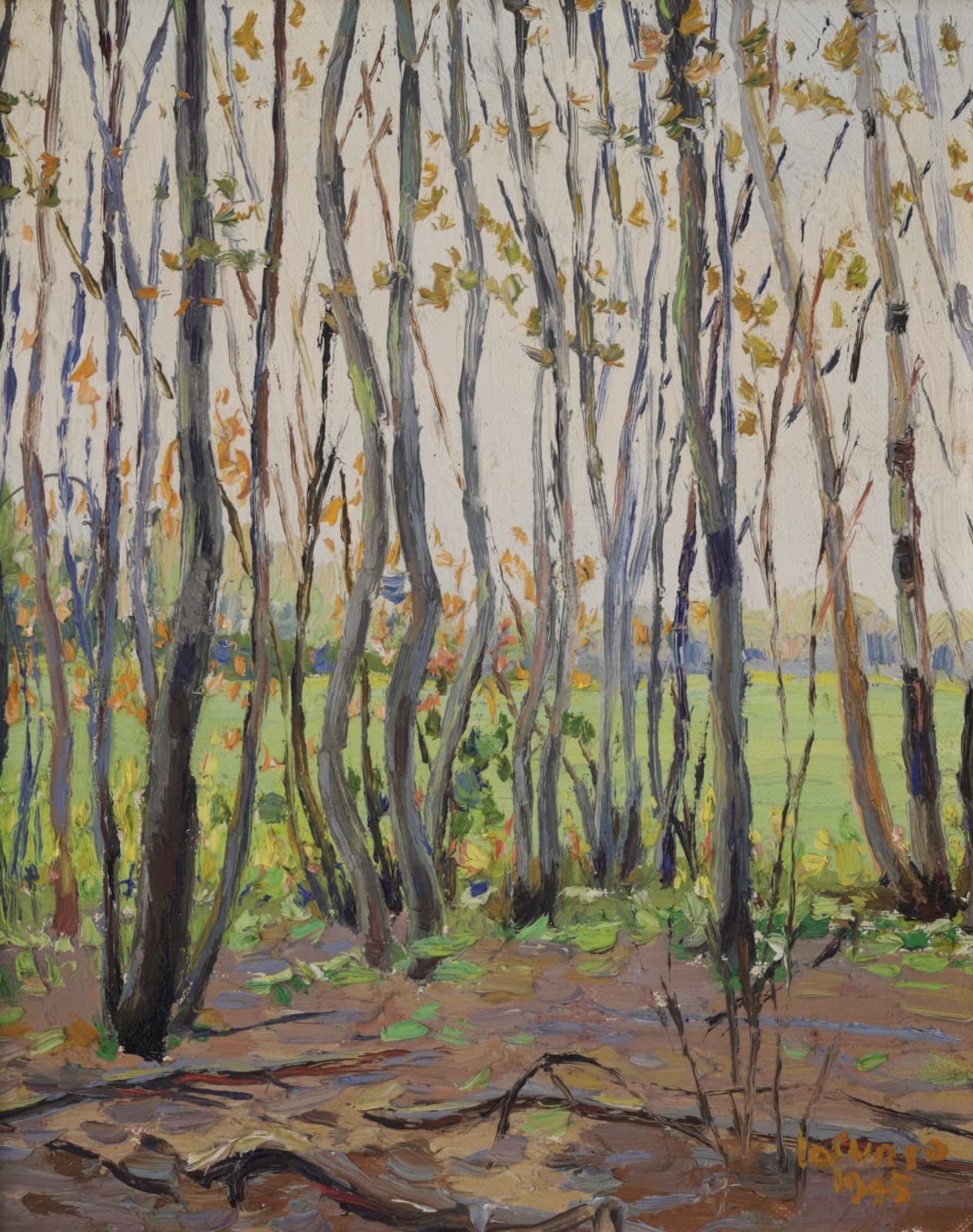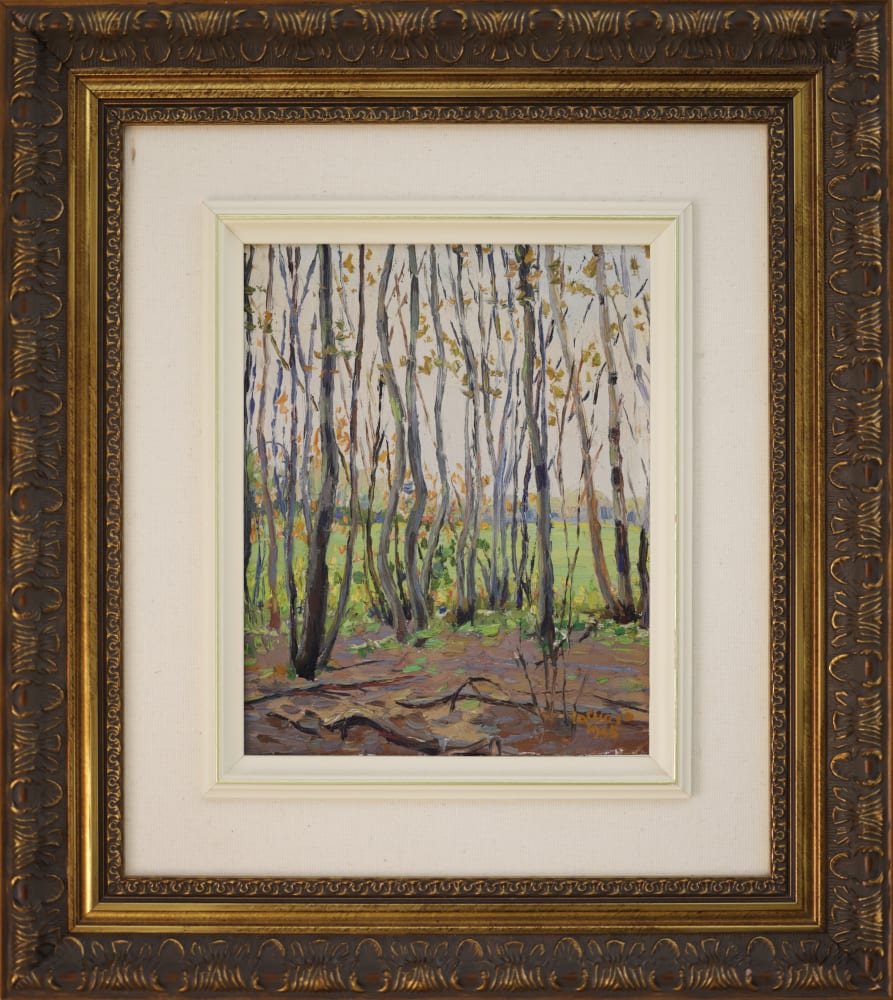Francesco Iacurto Canadian, 1908-2001
Cap Rouge, 1945
oil on panel
10 x 8 in
signed and dated bottom right
Currency:
Further images
Francesco Iacurto's Cap Rouge, painted in 1945, presents a stark yet compelling view of the Quebec village during a subdued season. Departing from vibrant scenes of lush greenery and bright...
Francesco Iacurto's Cap Rouge, painted in 1945, presents a stark yet compelling view of the Quebec village during a subdued season. Departing from vibrant scenes of lush greenery and bright skies, this piece captures the quiet, contemplative mood of late autumn or early winter with barren trees and a grey sky dominating the landscape.
Iacurto’s use of a muted palette effectively conveys the somber atmosphere of the season. The bare trees, stripped of their leaves, stand in sharp contrast against the overcast sky. Their intricate branches create a delicate, almost skeletal pattern, emphasizing the stillness and quietude of the scene. The grey sky, painted with subtle variations in tone, adds depth and a sense of melancholy, enhancing the painting's introspective quality.
The composition is carefully balanced, with the barren trees drawing the viewer's eye across the painting. The absence of foliage and the muted colours suggest a landscape in transition, poised between the vibrant life of summer and the dormant stillness of winter.
Despite the subdued tones, Iacurto’s brushwork brings a sense of texture and movement to the scene. The detailed depiction of the trees and the subtle gradations in the sky reveal his skill in capturing the nuances of the natural world.
Cap Rouge reflects Francesco Iacurto’s ability to find beauty in the quieter, more introspective moments of nature. This painting invites viewers to appreciate the tranquil, understated elegance of a landscape at rest, highlighting the serene beauty found in the changing seasons. Through his nuanced use of colour and composition, Iacurto offers a poignant glimpse into the timeless and ever-changing character of the Quebec countryside.
Iacurto’s use of a muted palette effectively conveys the somber atmosphere of the season. The bare trees, stripped of their leaves, stand in sharp contrast against the overcast sky. Their intricate branches create a delicate, almost skeletal pattern, emphasizing the stillness and quietude of the scene. The grey sky, painted with subtle variations in tone, adds depth and a sense of melancholy, enhancing the painting's introspective quality.
The composition is carefully balanced, with the barren trees drawing the viewer's eye across the painting. The absence of foliage and the muted colours suggest a landscape in transition, poised between the vibrant life of summer and the dormant stillness of winter.
Despite the subdued tones, Iacurto’s brushwork brings a sense of texture and movement to the scene. The detailed depiction of the trees and the subtle gradations in the sky reveal his skill in capturing the nuances of the natural world.
Cap Rouge reflects Francesco Iacurto’s ability to find beauty in the quieter, more introspective moments of nature. This painting invites viewers to appreciate the tranquil, understated elegance of a landscape at rest, highlighting the serene beauty found in the changing seasons. Through his nuanced use of colour and composition, Iacurto offers a poignant glimpse into the timeless and ever-changing character of the Quebec countryside.
Provenance
- titled on reverse6
of
6






